Judy Blume is an American Young Adult author most known for her works, Are You There, God? It’s Me, Margaret and Tales of a Fourth Grade Nothing.
In her MasterClass, she teaches us how to write for younger readers. I was aware of her status as a beloved author, and I was intrigued to see what I could learn from her.
Having made your way here, you’re probably keen to discover whether this course is right for you. So in this Judy Blume MasterClass review, I’ll share my honest opinion and what you can expect to learn.
At around 3 hours in length, Judy covers a lot of material. As a result, this review will be fairly long. However, here’s a quick summary if you want the headlines:
.
Quick summary
You will learn how to:
- Find ideas by observing the world
- Use note-taking and effective research to develop a story
- Write for young readers
- Structure your novel
- Create memorable characters and realistic dialogue
- Revise your final drafts
- Turn writing into a career
Pros
- Learn from a national literary treasure
- Fabulous production values and engaging presentation style
- Valuable insight into how to write for younger readers and create compelling characters
Cons
- Unconventional views on writing
- Little focus on how to write beginnings
Course length: 24 lessons, 4hr 50m.
Best for: Anyone looking to make a career in child/young adult fiction.
Overall: If you’re interested in writing fiction for young people, this MasterClass is for you. Judy’s lessons are engaging and optimistic but most importantly, she teaches for students of all skill levels (view details).
So, now onto the more detailed review. Here’s what I’ll be covering:
- What Judy Blume’s MasterClass includes
- What I liked and didn’t like
- Who the course is for
- Price, alternatives, and whether the course is unique
But first, here’s a precis about Judy’s achievements and the MasterClass proposition:
About Judy Blume
Judy Blume is a Young Adult writer, known for her New York Times best sellers, such as Blubber and Here’s to You, Rachel Robinson.
Her novel, Are You There, God? It’s Me, Margaret, made Time Magazine’s “All-Times 100 Novels List.”
In 2004, she was awarded the National Book Foundation Medal for Distinguished Contribution to American Letters.
She also received the E. B. White Award in 2017 as well as the Carl Sandburg Literary Award in 2018.
If you haven't seen the Judy Blume MasterClass trailer yet, I highly recommend you watch it:
About MasterClass
“Online classes created for students of all skill levels.”
Founded in 2015, MasterClass is an educational website. It specializes in video content, and has over 80 video lessons from world-renowned experts in their fields.
Unlike other websites, which often feature academic lecturers, MasterClass offers classes from those whose accolades have made the celebrities in their field, such as Anna Wintour, Gordon Ramsay, and Hans Zimmer.
With such high profile names attached to their brand, it’s no wonder MasterClass has surged in popularity in recent years.
While its high production values are unrivaled, it’s worth noting that MasterClass may not be for everyone. So in this MasterClass review, I will highlight both pros and cons to help you decide whether this is the learning resource for you.
An Inside Look Into Judy Blume’s MasterClass
Judy Blume’s MasterClass consists of 24 lessons, each roughly between 10 and 20 minutes long. This adds up to over 3 hours of content.
Along with this, there’s also a Community Hub and Class Workbook for further learning.
After a short introduction, the course continues as follows:
Lesson 2: Judy’s Childhood
“I always ask writers when I meet them: what were you like as a child?”
Judy introduces us to her experiences with storytelling as a child. She tells us that there are “two Judys” that have coexisted since her youth and gives some insight into how her imaginative tendencies led to her career.
Movingly, Judy expands upon her idea of stories as “company” and suggests ways in which they can provide comfort to children with a sense of feeling different or of not belonging.
Although her affinity to children’s literature is a key focus of this course, Judy also speaks to all writers when she discusses her inspirations and her working methods; these opening lessons about her creation of characters and backstory are applicable to anyone seeking advice on how to begin writing.
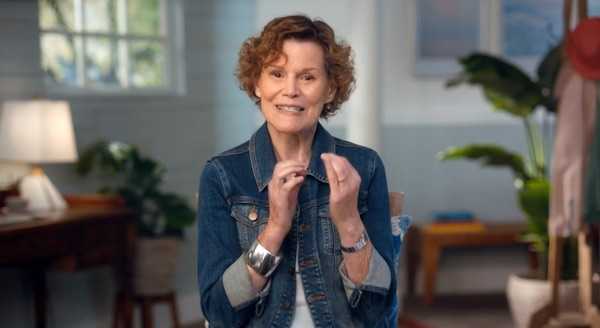
Lessons 3-5: Finding Ideas
“The best stories do come from deep inside.”
For many, ideas are the starting points from which stories can develop. Here, Judy sheds some light on how she finds ideas and grows them and teaches us how to do the following:
- Develop a story from feelings
- Find inspiration in everyday life
- Invent characters
- “Tune in” to the world around you
- Record your findings
- Open your mind to ideas
As she terms it, we can put ideas on a “backburner” or a “frontburner,” and both can grow if we leave them to “simmer.” She takes us through her idea-building process to show us how she develops a story from there.
Judy lays out some of her books’ pivotal themes and how she worked through her childhood to arrive at these. For her, inspiration can come from the past and be drawn out at any time. But she also shares some more unconventional ways in which she has found ideas!
Whether you’re a children’s writer or not, I think this chapter is useful for anyone looking for ways to discover, record, and develop ideas. Judy gives a good mix of theory and practical teaching in this lesson and leaves us with some exercises we could try out on our own to dig deeper into the imaginative process.
Lessons 6 & 7: Writing for Younger Readers
“If I meet a 5-year-old, I want to talk to that 5-year-old as a person.”
Here, Judy addresses the importance of tapping into the child you once were to develop captivating stories, and how relationships between adults and children can inform our writing.
She suggests some visualizing exercises to help us get in touch with our younger selves, and prompts us to consider the themes that impacted our childhoods.
What struck me most about this section was Judy’s honesty in how she challenged conventional children’s literature. As her fans will know, she tackled issues that were taboo at her time of writing.
In fact, the lack of available literature that addressed difficult themes was the catalyst for her work. This gave insight into how we too could identify gaps in current literature, as well as providing inspiration to use your gut instinct to write and tell the stories you think should be told.
She provides lots of tips on how we can get to the “real stuff” and talk to children on their level in our stories. And I loved that she gave insight on how to balance our writing so that the audience have to do some of the work themselves.
She concludes this section by helping us understand how we can use the work of others to figure out what we want to write about (and why) and gives us a valuable exercise we can try out for ourselves.
Lessons 8 & 9: In the Unlikely Event: Case Study
“I had this story deep inside me, and I never thought to tell it.”
While Judy backs up her points with many examples of her work, In the Unlikely Event is her strongest and most persistent case study. She tells us how this book came to her and how the idea differed from others.
Her inspiration for this book was based on an event from her childhood, and Judy uses this to illustrate her methods of researching and to demonstrate the difference between writing about real and imaginary people. Perhaps because of its sensitive subject matter I found this example quite moving.

In this case study, Judy shows us how she used first-hand research to do justice to such a powerful story, including conducting interviews and getting to know the families involved.
To Judy, research is security and while she addresses its problems, she also emphasizes its usefulness in helping us to grow our work.
Helpfully, Judy shows us some of her own character notes to exemplify how planning can appear on the page. She then goes on to explore how she grew these notes into fully-realised scenes.
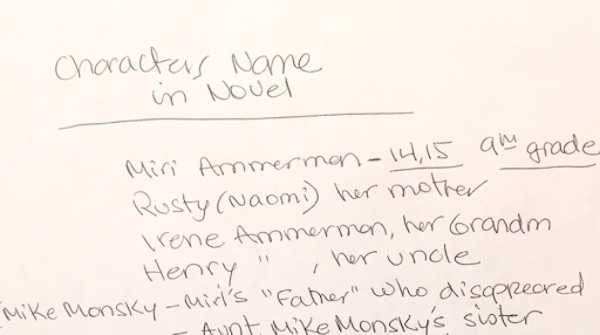
Her parting words on creating characters also acted as a good segue into the next two lessons, which would look deeper into character creation.
Lessons 10 & 11: Creating Memorable Characters
“Without characters, there’s nothing.”
Judy has a visibly emotional relationship to character writing which she expresses unashamedly throughout the course.
She emphasizes our need to “spend time” with our characters in order to develop them. Along with her examples from her note-taking, she also tells us how we can get our readers to invest in our characters and view them as real people.
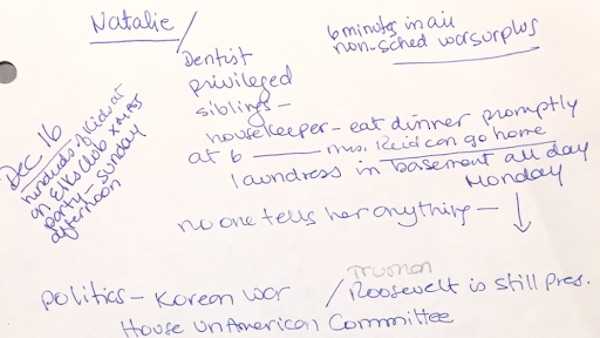
She also addresses the following points:
- What is a character?
- How to make characters real
- Using point of view to show character
- How to convey emotion
- Sparking interest through contrast
- How to use reading to develop character
- Why naming characters is important in making a story work
What I found interesting about Judy is that she didn’t see writing as fun but as a compulsion. For me, this was a new perspective on writing. I had always assumed no one would choose to write for a living unless they loved to do so.
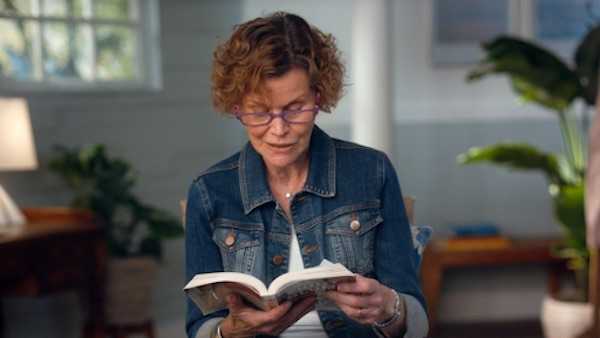
Lesson 12 & 13: Writing Dialogue
“The one thing that’s never changed is the way I write dialogue.”
Judy shares with us her love for dialogue, and tells us how we can use it to advance our stories. As she says, dialogue and character are interrelated and inform each other.
In this section, we learn how to do the following:
- Craft a realistic voice
- Understand what makes good dialogue (and bad)
- Capture the ways in which people talk
- Make dialogue look better on the page
As one of her self-proclaimed strong suits, Judy shows us how we can practice our dialogue in order to refine it and (significantly for her) to simplify it. She also tells us what to steer away from and why we should do so.
I like that Judy is open about her unconventional writing style, and how she has been reproached for her choices in the past. Judy admits that there is no right way to write, but I found her advice so compelling that I was inclined to believe in it.
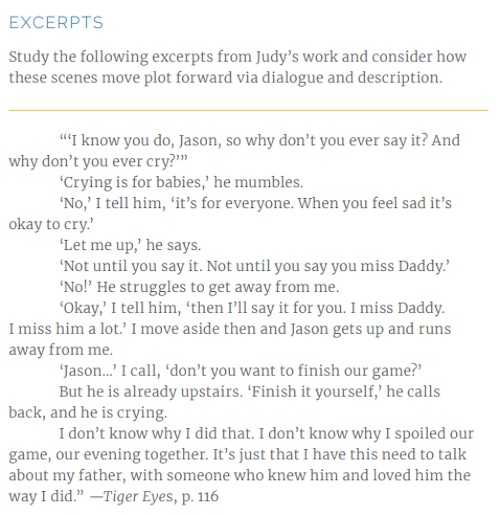
Like most of her other chapters, Judy uses excerpts from her work to illustrate her points. In this case, she takes an extract from Tiger Eyes to show us how she revealed character through dialogue. This was also included in the Workbook, and gave us a chance to analyse the text first-hand rather than watching passively.
Lessons 14 & 15: Creating Plot Structure
“The idea of the word ‘plot’ makes me very nervous.”
Almost in contrast to the previous section, Judy admits her uneasiness when it comes to plot. She posits her own definition of the word and how she approaches it in writing.
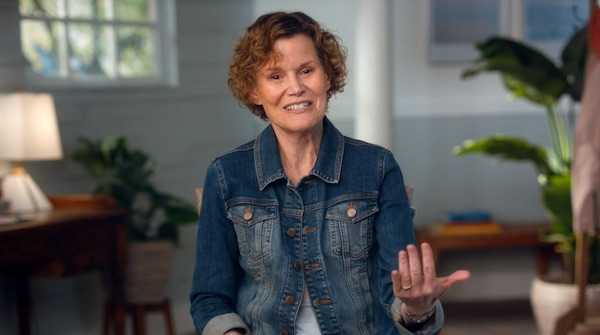
While Judy isn’t confident discussing plot in great detail, she does elaborate on the creation of scenes, how we can use pacing to advance “plot” and how to edit scenes with the larger story in mind.
She also teaches the following:
- How and why you should develop character points before progressing to the plot
- How setting influences plot
- Ways to end a plot and the impact of open and closed endings
She uses a mixture of her children’s and adult books as examples to back up her teachings, and despite some inevitable spoilers, she is fairly secretive about what actually happens in the conclusions.
My main takeaway point from this section was Judy’s honesty in admitting that people won’t always like our endings. It’s not our job to provide a satisfying ending for everyone.
As she states, all we can do is commit to our story and follow it through to the best of our ability. While she admits endings are important, this was some useful context to consider at a post-publication stage.
Lessons 16 & 17: Judy’s Writing Process
“My most creative writing comes with a pencil in my hand.”
Towards the end of the course, Judy shares some tips she has learned when it comes to writing a book through the “murky middle” to the end.
Her main emphasis is on keeping readers gripped, insisting that children, in particular, will not grant you as many pages to hold their attention. Judy also advises us on the following:
- Using outlines vs. messy writing
- How to get through the middle
- Ways to approach revision
- The difference between a first and second draft
- What to eliminate in your final drafts
Like Malcolm Gladwell’s MasterClass, Judy views the writing process as one of solving problems to create a cohesive unit. She also shares with us her own revision process to give us an idea of how to approach later drafts.
I hadn’t seen a writer talk in such great detail about what they address in each draft, but Judy is thorough in telling us exactly what she wants to achieve by the end of each revision, and what she focuses on in turn.
I appreciated her honesty in this lesson, and also liked her frank dismissal of writer’s block. As she sees it, there are good days and there are bad days, and we have to work through them all.
Lesson 18: Getting Ready to Submit
“Every editor wants to discover that new talent.”
Following on from the revision process, Judy ventures into how to find an agent and get published. Although she admits times are no longer as they were, she shares her advice for writing a “knockout query” for a potential agent.
She also describes her experience recording her first audiobook and how this changed the way in which she prepared her work for publishing. As well as this, she discusses the importance of finding valuable feedback, and insists that if we follow her advice, we will get discovered.
Lesson 19: Working with Editors
“My advice when working with an editor is: listen.”
In this section, Judy considers her relationship with her editor, Dick Jackson. She praises him highly throughout and suggests ways in which writers and editors can work successfully together.
I liked hearing her success story about being “discovered in the slush pile”, and I appreciated her tips for working together to achieve the end result.
Lesson 20: Rejection
“Rejection is a fact of life if you want to be a writer.”
Judy sees rejection both as fuel, and an opportunity to build determination. She even reads us her rejection letters to put them into perspective.

Judy suggests how we can get over the fear of rejection and instead dedicate ourselves to writing without stopping. I found that Judy was particularly motivational in this section, and she gave us some solid advice on how to put bad reviews into context and set them aside.
One nugget of wisdom was Judy’s insistence on turning negative feedback into positive. She tells us that we can use the negative to learn and to reframe our thinking about criticism. Judy also parts on a helpful fact: readers aren’t always reading reviews!
Lesson 21: Marketplace
“Writing to a trend is a mistake, always.”
Here, Judy addresses the more practical side of publishing as it relates to consumers. She spends some time discussing how she finds a title and how she works with her agent and editor to whittle down ideas.
I liked that Judy shared her inspiration for her titles as it gave us insight into how we might consider them for ourselves. This was a fact of writing that some authors didn’t discuss, and I enjoyed Judy’s honesty when it came to expressing her thoughts on titles and cover art.
Judy also debates the following:
- Literary categories and how to manage them
- The pros and cons of writing to trends
- What she chooses to write about and why
- How to market yourself
Lesson 22: Controversy and Censorship
“As a writer, you have to go into that little room and leave your fear outside.”
At the end of the course, Judy shares the difficulties she faced upon the publication of her best known book: Are You There, God? It’s Me, Margaret. She tells us the context of its publication, and of other publications, in the early 70s and 80s.
Judy’s focus is on censorship and how books have been (and continue to be) challenged throughout time. Being supportive of the National Coalition Against Censorship, Judy dissuades us from self-censorship and gives us some parting advice on staying true to our ideas.
Lesson 23 & 24: Career Journey
“Imagination has always been such a part of my life.”
Judy leaves us with some final advice on writing and tells us how her career has progressed from her early days to the present. While her conclusion focuses on examples from her own career, she does impart to us how to do the following:
- Connect with readers
- Celebrate milestones
- Share in the pleasure of reading
In her final words, Judy actually talks about her departure from writing and dismisses any plans to write an upcoming work. She tells us about her plans for the future and how she shared her love for reading and writing by establishing her own bookstore in Key West.
I liked that she highlighted her career from her first publication to the present day and showed us the exciting trajectory that a writer’s life can take.
My Experience of Judy Blume’s MasterClass
All in all, there was a lot to enjoy in Judy Blume’s MasterClass. But I felt there were one or two shortcomings too and it’s worth noting these before deciding whether or not this course is for you.
What I Liked About Judy Blume’s MasterClass
Learn from a Literary Treasure
While I hadn’t read any of Judy’s works myself, I knew her reputation as a young adult author. With this in mind, I felt confident that I wasn’t learning from just anyone, but from someone who was clearly successful in their field.
As well as outstanding teaching, MasterClass is known for its high production values and excellent quality videos. They present Judy’s lessons in a clear and concise manner, and she is easy to follow from lesson to lesson.
One quality I like about Judy is that she speaks coherently throughout her class, and always with a smile on her face. I can tell that she really likes what she does. The insight she gives into writing during the 70s is also really fascinating.
Use Your Own Life to Write
Judy places a lot of emphasis on drawing from our own experiences and I think she did a great job of showing us how we can use our past to conjure ideas.
And it was super helpful that she used her most autobiographical novel, Starring Sally J. Freeman as Herself, to show how one’s experiences can bear upon the process of writing.
Write for Young Readers
Throughout the course, I felt that Judy had a real affinity to childhood and its experiences. She places a lot of emphasis on how to cater towards young readers and how to normalize the issues that concern them.
She covers a lot of difficult subjects that writers of her time strayed away from, including issues of divorce, which she discusses in her books, It’s Not the End of the World and Just as Long as We’re Together. This was inspiring for any writer who was perhaps tentative about stepping outside of conventional themes.
All in all, Judy advises us candidly on what to avoid and dispels a lot of misconceptions when it comes to writing for children. As someone who hadn’t considered writing for younger audiences, it was interesting to see how Judy’s advice differed from that she gave about other types of writing.
Read to Understand
Admittedly, this was a point I had seen covered in other classes. But Judy’s approach was certainly different to others’. She goes beyond telling us to read plenty of books and instead teaches us how we can use those resources to find our own style.
Judy even gives us a unique method of organising books according to how they can help us write. She encourages us to see reading as a way of testing our own themes and broadening our inspiration.
As Judy puts it, “You learn to write because you’re a reader.”
Create Memorable Characters
From the offset, Judy posits character as the most important aspect of any piece of writing. While she reveals that creating dialogue is her “greatest pleasure,” she spends a good few lessons showing us her character notes and her inspirations for them.
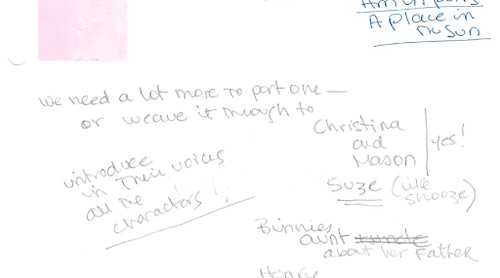
This section was a nice way to visualize the character-building process. In particular, I think it’s a good method to use in order to bring ideas together and form a character profile.
Judy also spends time discussing how to make readers invest in our characters. She tells us the importance of creating a connection between character and reader, and how this further relates to story development.
Write Dialogue
While many writers address writing dialogue, there’s something gripping about the way Judy does it. Perhaps it’s her honesty in admitting that it comes naturally to her, but she has a very logical way of laying out speech.
She draws attention to the ways in which dialogue can serve or obstruct the story and how to imitate a conversational style. It was refreshing to learn how Judy used dialogue to make her writing accessible, instead of complicating language and blocking it off from a wider audience.
I think this also dispelled a lot of the myths new writers believe when it comes to constructing speech. Judy shows us that less is more and that simple is usually better.
Accessibility
While MasterClass isn’t perfect in terms of access, it does have English subtitles for those who are hard of hearing. This is positive when compared to other websites that have auto-generated subtitles.
The Workbook is also a great resource for those who want to go over lessons at their own pace. Whilst it lacks visuals, this PDF is well-organised. It breaks down topics into the following sections:
- Chapter reviews.
- “Take it Further.”
- Assignments.
- Excerpts.
- Suggested Reading.
The assignments are a great way to engage with the course, particularly for those who learn by doing. I liked that MasterClass took different styles of learning into account when planning its courses.

What Could Be Improved
Although I enjoyed Judy Blume’s MasterClass, I don’t think it’s without its flaws. Here’s where I think it could be improved.
Controversial or Unconventional Teaching
While I don’t think Judy is controversial by today’s standards, a lot of her thinking involves breaking conventions, setting new standards and breaking away from literary trends.
This is a positive for many. But, if you’re looking to write “trendier” books, this might not be the course for you.
No 1-1 Contact
A limited number of MasterClass celebrities will respond to questions posed by the community. This is not the case with Judy.
You can submit questions on the Community Hub if you are unclear about anything, but these will be answered by other students, not Judy herself.
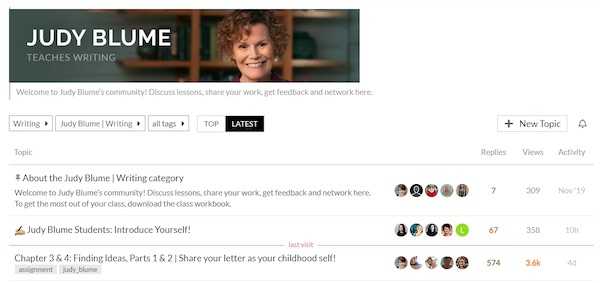
MasterClass now offers Class Live sessions which are free to join. Viewers can submit questions, and if they are lucky, their questions will be chosen and responded to by the actual celebrity. At the time of writing, Judy was not scheduled to do one of these.
Less Emphasis on Writing Beginnings
Something I noticed about Judy’s course was that she drew little attention to writing beginnings. She briefly mentions that beginnings are “exciting” but doesn’t explore much beyond this point.
Instead, she focuses on “the murky middle” and the book’s conclusion. While her advice is valuable, I would’ve liked to have seen more about the ways in which we can get started.
The End of the Course is a Little Lacklustre
Like many lengthy video courses, Judy’s MasterClass consists of peaks and falls. I think this is clearly seen as the course goes on. Judy offers some sound advice in the first half of the course. Namely, her lessons on writing dialogue and creating character were particularly strong.
That being said, my attention dwindled during the later lessons. Judy spoke more about her own experiences as a writer and how getting published was different in her times. It was interesting to hear how publishing had evolved, but I didn’t feel it was relevant to today’s audience.
"I love Judy Blume as much as the next person, but there is some very troubling advice here. First, as others have said, you don’t “need an agent”.... A lot of writers have been successful with indie publishing-check out the Facebook group 20bookingsto50k if you want to see a ton of them. So the agent and big traditional house isn’t the only option anymore." - Comment from the community
It’s a shame that these later lessons didn’t hit the mark. I’m sure many were hoping to hear some encouragement from their favourite author. Sadly, Judy didn’t seem to be too in touch with the writers of today. Although, she did give some good tips on how to self-market in the digital age.
Worth the Money?
One downfall of this course is the harsh realities of budget. Some simply couldn’t afford the course, and this raised the issue of accessibility.
"Videos like this make me wish I wasn’t broke!" - Comment from YouTube
While this is a subjective topic, many did stress the cost-effectiveness of getting the all-access pass. As one user on Reddit notes, this allows you to take unlimited classes as part of a yearly subscription. If you’re interested in writing, you can gain valuable insight into many perspectives and learn from the best.
"Yes! It is fantastic! I would recommend just paying for the yearly package so you can have access to them all. I have really enjoyed learning from different writers." - Comment from Reddit
Who is This Course For?
While MasterClass titles this class, “Judy Blume Teaches Writing,” it’s most suited to those looking to make a career in children’s and young adults’ fiction.
Plenty of Judy’s advice is universally applicable and addresses issues that most writers face. But, for $90, I feel that aspiring YA writers would get the most out of this course.
If you take this MasterClass, you will learn how to do the following:
- Find ideas for stories
- Write for young readers
- Edit your work for publication
- Create memorable characters
- Write effective dialogue that informs your story
- Structure your plot in a gripping way
- Create satisfying endings
- Write for the marketplace
- Deal with censorship
On a scale of 1-10 (1 being a beginner and 10 being a professional) I think Judy’s course is suitable for anyone between 1-7. This is mainly because she places a lot of focus on how to write for children. This might not be as useful to those who are established writers.
How much does the course cost?
Currently, MasterClass has three subscription offers. The price for these (per month) are:
- Individual (1 user): $10
- Duo (2 users): $15
- Family (6 users): $20
All are billed annually, which may seem a little pricey at first glance.
That being said, the value for money comes from taking as many courses as possible.
With 200+ courses on MasterClass, you’re bound to find many that interest you. But, even if you find that only 10% of the courses interest you, this still works out at $6 per course.
And, if you join with friends or family, the cost for each course is drastically reduced. Check out our MasterClass review or MasterClass cost articles to see how.
Bearing in mind that these courses are taught by leading experts, the value for money is unbeatable. Elsewhere, you can pay over $100 for a course taught by someone you’ve never heard of, and it would nowhere near match the caliber of teaching on MasterClass.
Besides, MasterClass offers a 30-day refund policy if you’re not happy with your purchase.
You can also purchase MasterClass as a gift.
Alternatives to Judy Blume’s MasterClass
If you’re still on the fence about Judy’s course, here are some other MasterClass options:
- David Mamet—Dramatic Writing
- Neil Gaiman—The Art of Storytelling
- R. L. Stine—Creative Writing for Young Audiences
- Amanda Gorman — Poetry
- Margaret Atwood—Creative Writing
- Malcolm Gladwell—Writing
- David Sedaris—Storytelling and Humor
- Joyce Carol Oates—The Art of the Short Story
- David Baldacci—Mystery and Thriller Writing
- Billy Collins—Reading and Writing Poetry
- James Patterson—Writing
- Walter Mosley – Fiction and Storytelling
- Salman Rushdie – Storytelling and Writing
- N. K. Jemisin – Fantasy and Science Fiction
If you’re choosing a single course on MasterClass, it’s worth looking into each writer’s specialities. However, if you opt for the yearly subscription, why not take them all?
As well as MasterClass, there are other online resources that offer writing classes. Udemy has a course on how to write a children’s book and Domestika has a course focusing on narrative in children’s literature.
Although these courses might be helpful, I don’t think they offer the same level of teaching and quality you get with MasterClass.
Judy Blume’s MasterClass: What Others Have Said
Judy’s MasterClass has had a largely positive reception. Some users even named it the strongest writing course on the website. There were also many users that were inclined to take her course because they were already fans of her work.
"Just completed the MasterClass. Best writing course on MasterClass, hands down!" "I love listening to Judy and her passion for writing. You can learn so much from just listening to her talk without her ever giving you instructions on how to write." - Comments from the community
Judy’s delivery style is easy to follow and she has a conversational tone that is quite personable. Despite her status, I felt that she was talking to me on my level. She also steered away from using jargon when teaching.
However, one drawback to the course was the Class Workbook. Many learners felt that the PDF was confusing and didn’t always match up with the video content.
This seemed to be a common complaint and was a shame when considering the price of the course. While I found the Workbook manageable, I can see why others struggled. It was very text-heavy and could have benefited from a contents page.
That being said, Judy’s course had a largely positive reception. Many thanked her for helping them out of a writing rut and inspiring them to get going.
"The BEST; the VERY BEST...The things I learned from Judy’s beautiful expression of her journey as a writer/author were just what I needed. Looking forward to the stories yet to come in my novel! Thank you Judy Blume. This was really FANTASTIC!" - Comment from the community
How long it took to complete the course
Judy’s MasterClass has a viewing time just short of 5 hours. However, many topics are spread across 2 or 3 video lessons. Because of this, each section is quite lengthy.
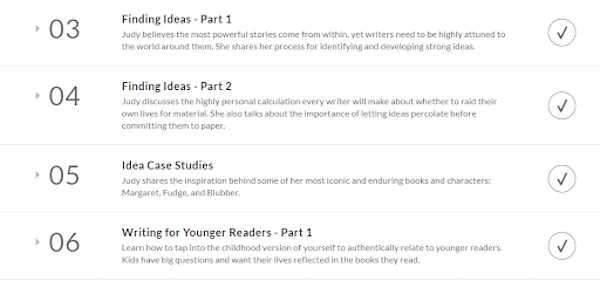
Personally, I think it’s worth taking a week to really delve into each topic. Judy provides a lot of case studies for her lessons and spends time focusing on each one.
When it comes to the Workbook, the time you spend is a lot more dependent on your own commitments. Within each chapter, you’ll find a chapter review, further reading, assignments, and additional learning.
The PDF is helpful for those wanting to go at their own pace, and is a good resource to explore beyond the course.
Is the content unique?
As Judy’s only online course, this MasterClass seems fairly unique. It goes into a lot of detail I hadn’t seen elsewhere. After settling down with her bookstore in Key West, Judy seems to keep out of the public eye. She also admits that her career in writing is on pause.
I found an interview on CBS where Judy discusses her last novel, but this (and other interviews) didn’t go into nearly as much depth as her MasterClass does.
Another benefit of the course compared to her shorter TV interviews is that it organises Judy’s teachings into navigable chapters. The MasterClass follows Judy’s career journey and gives us great advice on our own writing along the way.
What You Will Need
While you don’t need any equipment for this MasterClass, it’s good to have a pen and paper or word processing app for the assignments.
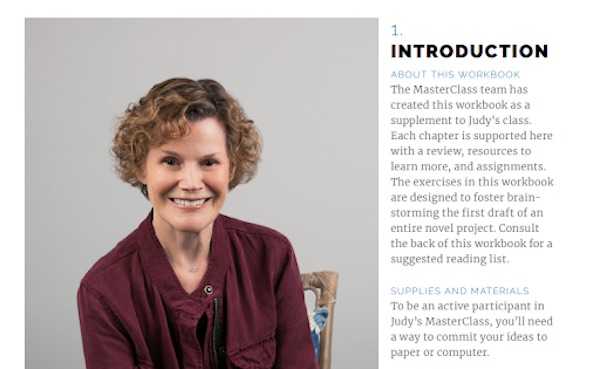
Judy Blume MasterClass: is it worth it?
I was impressed by how positively this course was received. As someone who hadn’t read Judy’s work, I wasn’t sure whether I’d enjoy her teaching style or understand her references.
I ended up enjoying this course, and took away some good advice about how to develop characters and write for my audience.
While I do think Judy has a lot of universally helpful ideas, other courses might be more suitable if you want to write for older audiences. One example is Malcolm Gladwell’s MasterClass, which focuses more on writing for adults. It’s worth watching the introductions to each MasterClass to get a feel for the content.
It’s not essential to be familiar with Judy’s works. Although, I would recommend reading In the Unlikely Event (available on Amazon here.) This is her most recent book and it serves as a case study for many of her teachings.
Pros:
- Learn from a national literary treasure
- Gain insight into how to write for younger readers
- Create compelling characters and dialogue
Cons:
- No 1-1 teaching
- Unconventional views on writing
- Little focus on how to write beginnings
You Will Learn How to:
- Find ideas by observing the world
- Use note-taking to develop a story
- Write for young readers
- Effectively research
- Revise your final drafts
- Create memorable characters
- Write realistic dialogue
- Structure your novel
- Turn writing into a career
For an aspiring YA author, I think this course is worth the $90. Judy teaches us not only how to write, but how to get published and work as a writer.
If you’re interested in writing YA or children’s fiction, I think this MasterClass is for you. Judy has a friendly approach to her videos and allows learners to see that inspiration can come from everywhere. Her lessons are engaging and optimistic but, most importantly, she teaches for students of all skill levels. And I think that’s what MasterClass is all about.
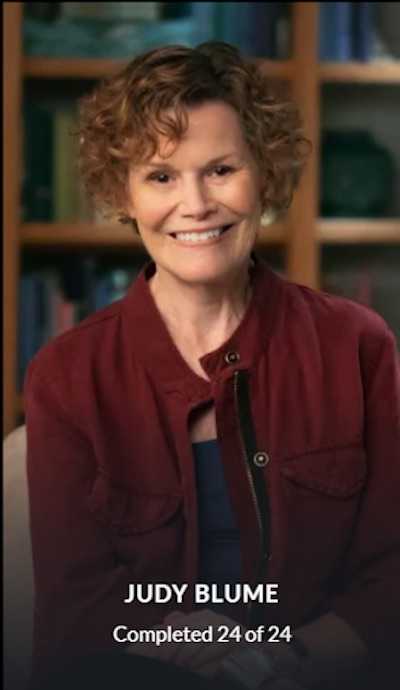
Frequently Asked Questions:
A MasterClass all-access-pass costs $120 a year ($10 a month). This gives you access to Judy Blume, alongside 200+ other courses.
There are 24 lessons totalling just under 5 hours. Most of the topics are broken down into two lessons.
There’s no way to access Judy’s MasterClass for free. The closest alternative is if someone purchases it for you as a gift.
MasterClass has a short trailer for Judy’s course, which shares some snippets of what we can expect to learn. This is a nice way of getting a feel for the content and is a chance for you to see whether it appeals to you.
MasterClass operate a 30 day refund policy if you purchase a class from them. If you purchase through another provider, you may find that a different returns policy applies.

Rebecca graduated from King's College university with a first class honours in English Language, followed by a Masters' Degree in Eighteenth Century Studies.



Hi there! Do you know if they make any plugins to safeguard against hackers? I’m kinda paranoid about losing everything I’ve worked hard on. Any recommendations?
Hi there! I totally understand your concern—website security is crucial. There are several great plugins available to help protect your site from hackers. If you’re using WordPress, some popular options include Wordfence Security, Sucuri Security, and iThemes Security. These plugins offer features like firewall protection, malware scanning, and login security.
Additionally, make sure to keep your site updated, use strong passwords, and enable two-factor authentication for extra security. Let me know if you need any specific recommendations! 😊🔒